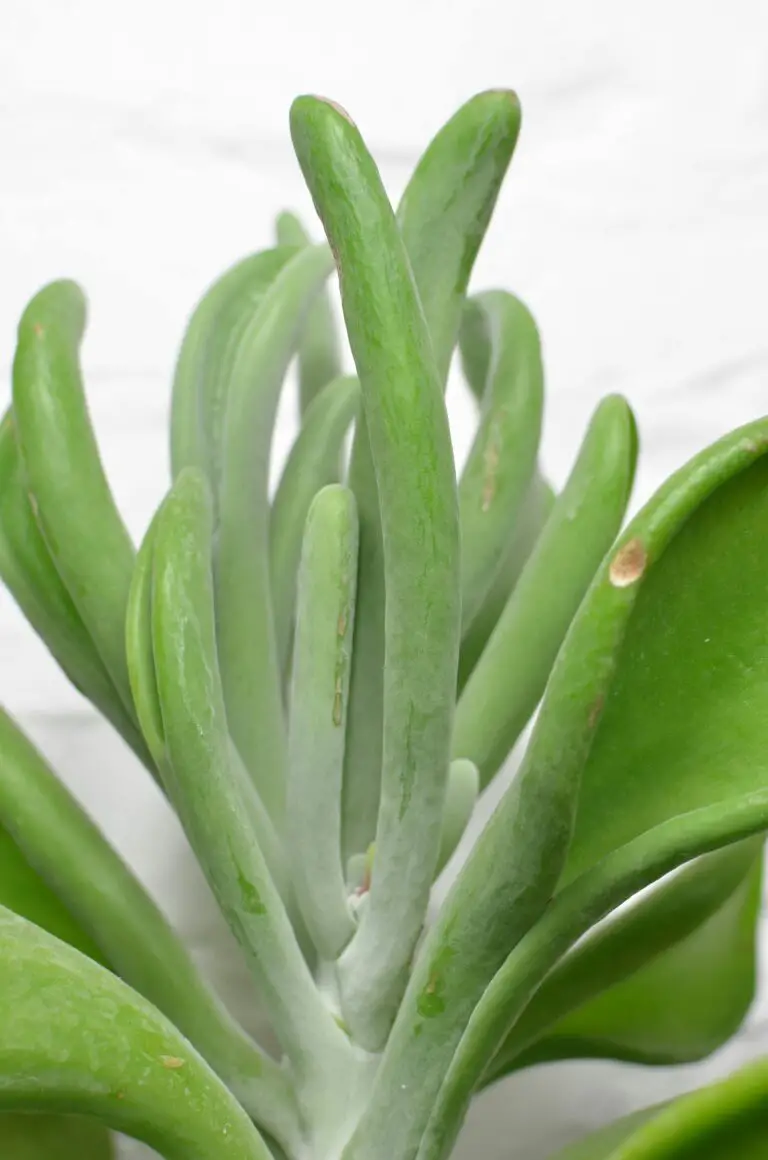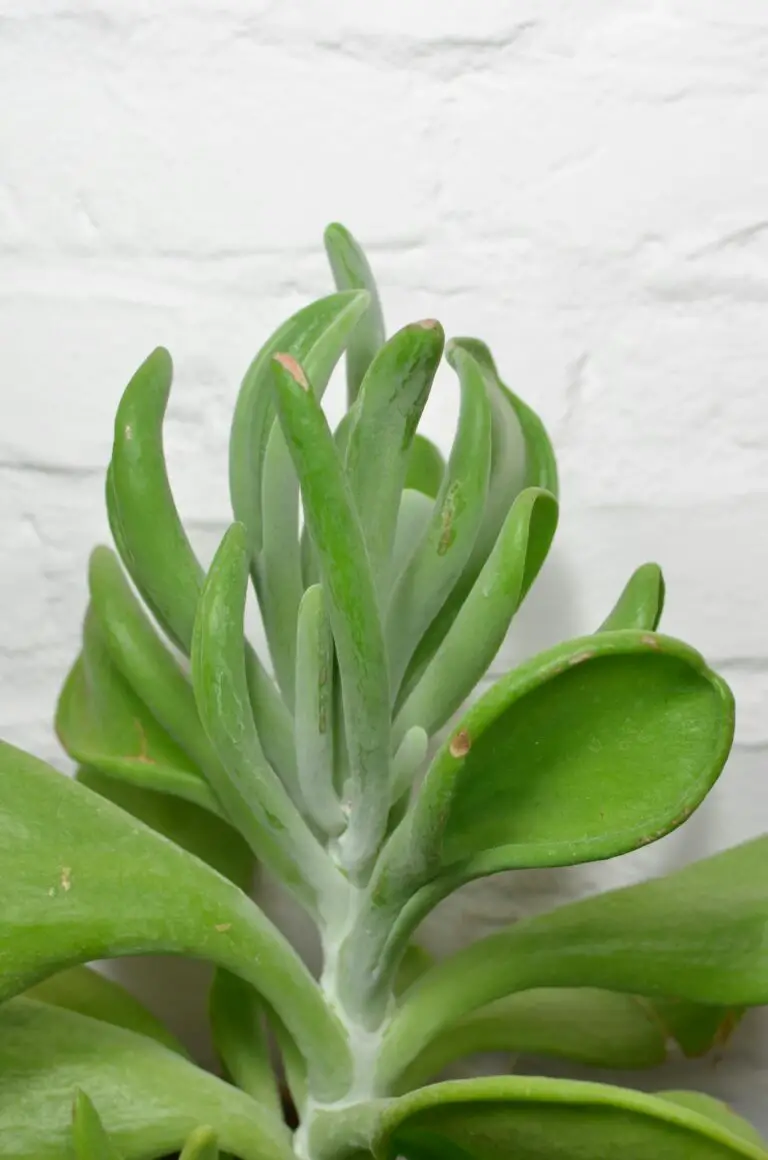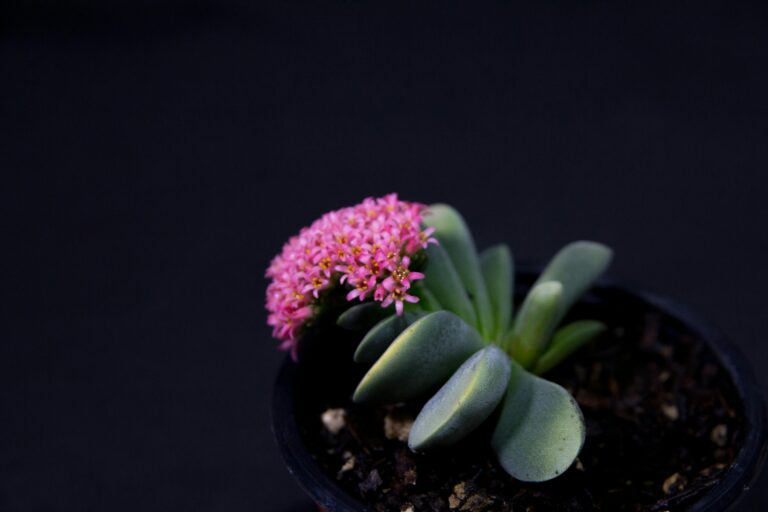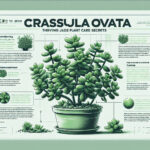The Alluring World of Crassula Plants
Welcome to a succulent lover’s paradise, where the Crassula genus reigns supreme! These aren’t just any old houseplants; they’re the ultimate display of Mother Nature’s ingenuity. Originating from diverse habitats, including the cliff faces and dry landscapes of South Africa, these sturdy little beauties have captivated the hearts of green thumbs around the globe. Whether you’ve got a windowsill packed with potted treasures or you’re just starting your botanical journey, Crassula plants are a surefire way to immerse yourself in the world of succulents.
Why are Crassula varieties so beloved, you ask? They’re like the chameleons of the plant world! Able to adapt to indoor living with ease, they can also brave the outdoors in warmer climes. With an array of forms and textures—from the plump leaves of Crassula ovata (the classic Jade plant) to the pixel-like marvels of Crassula buddha’s temple—it’s no wonder these plants have become a centerpiece in homes and gardens alike.
Real-life stories of Crassula enthusiasts abound, telling tales of tiny, unassuming cuttings that exploded into full-fledged, thriving plants, each as unique as a fingerprint. One example is Sarah’s crassula, which started as a small leaf she found lying on the floor at a garden center. Months later, it’s now a flourishing plant with thick, shiny leaves—a testament to the Crassula’s tenacious spirit.
Imagine placing a Crassula near your workspace, where it can soak up the sunrays through a nearby window. Before you know it, you’re not just working alongside a plant; you’re sharing space with an ever-growing, ever-green companion that brightens your day and cleans the air you breathe. And let’s not forget the sense of accomplishment as you witness every new leaf unfurl, marking the quiet success of your nurturing efforts.
Are you curious to see Crassula plants in all their splendid variety? Feast your eyes on this video, where you’ll dive into the rich tapestry of Crassula varieties and find out just what makes each one so special.
“`html
Crassula Ovata: The Jade Plant Phenomenon
Have you ever marveled at the sight of a Crassula ovata, standing robust and serene in the corner of a room, basking in the soft glow of morning light? Often regarded as the poster child of succulents, the Jade Plant is more than just an ornament; it’s a living sculpture that’s captivated the hearts of green-thumbs and novices alike. Let’s unearth the secret behind its widespread allure.
Characterized by its thick, glossy leaves that charmingly mimic the precious stone after which it’s named, the Crassula ovata is a study in resilience. These stout leaves do more than sparkle; they store water, allowing the Jade Plant to thrive even when neglect whispers its name. It’s no wonder that folks who juggle the hustle of life with the passion for green can’t help but be enchanted by its forgiving nature.
The popularity of this verdant virtuoso isn’t confined to its hardy demeanor. A symbol of prosperity and good luck, it’s often a prized possession in homes and offices, standing as a green beacon of optimism. Who wouldn’t want a living token that whispers the promise of financial fortune? It’s a real-life example of nature’s own version of a lucky charm!
It’s not just the symbolism that makes the Crassula ovata a centerpiece in plant collections. Its ease of care is another reason why it garners such fanfare. Even those who haven’t been blessed with a green thumb find joy in its low-maintenance company. This plant’s tolerance for sporadic watering and a spectrum of light conditions makes it a steadfast companion in the varied tapestries of indoor foliage.
Interaction with a Crassula ovata is always telling. Trim its branches, and it will reward you with a denser cloak of green. Let it grow, and watch as it shapes itself into a natural bonsai, an effortless masterpiece by the hands of time. One glance and it’s clear: the Jade Plant isn’t just living decor; it’s an interactive experience, growing and responding to the care it receives—or sometimes the lack thereof.
Talk of the town? Certainly! The Jade Plant’s phenom is echoed in living rooms and nurseries, where its ease of propagation becomes a joyful activity between friends and family. Snip a piece, share it with a loved one, and you’re not just passing on a plant; you’re starting a legacy. Indeed, this is no ordinary succulent; the Crassula ovata weaves itself into the fabric of our lives with verdant threads.
“`
From Petite to Towering: Sizes of Crassula Variants
Welcome to the diverse world of Crassula, where size really does matter! These succulent stars come in various forms and sizes, each with its unique charm. In the succulent family, Crassulas make a statement, from tiny, adorable varieties that can snuggle up on your office desk, bringing a pop of green to your workday, to the majestic specimens that command attention in any garden.

Imagine a Crassula ovata, commonly known as the Jade Plant, beginning its life as a small, unassuming potted friend, perched quietly on the corner of your desk. As time slips by, with a little tender care, it expands, growing into a lush, thriving plant that could necessitate a move to your living room, where it becomes a centerpiece of natural beauty.
On the other end of the spectrum, you might encounter a Crassula arborescens in a sprawling garden, its thick, woody stems shooting up to the sky, boasting a hefty structure with silvery leaves that shimmer in the sunlight. It’s not just a plant; it’s a living sculpture, adding an architectural element to landscapes.
But let’s not overlook the tiny tots of the Crassula world, such as the Crassula pellucida variegata, with its delicate, small leaves patterned in a kaleidoscope of colors, happy to reside in the smallest of pots. These petite varieties are ideal for those beginning their succulent collection or looking for a diminutive dose of greenery to enhance a quaint space.
When walking through a greenhouse or scrolling through images online, the sight of these varying sizes of Crassula is truly a delightful spectacle. They’re not just plants; they are a testimony to the adaptability and diversity of nature’s creations. From petite to towering, Crassula species prove that no matter the size, there’s a place for them in the hearts of plant enthusiasts and in the vast canvas of our environments.
Leafy Marvels: Understanding Crassula Foliage
Step into the world of Crassula, and you’ll find yourself surrounded by a tapestry of textures and a palette of greens so vivid, it seems like Mother Nature has been busy with her paintbrush. These succulent beauties are not just about their drought-tolerant virtues; their leaves are the real showstoppers. Each Crassula variety waves its foliage like a flag of nature’s ingenuity — from the powdery blues of the Crassula ovata to the ruby red edges of Crassula capitella ‘Campfire’.
Picture the plump, oval leaves of the classic Jade Plant, Crassula ovata. Now, let’s twist the narrative to the Crassula arborescens, with its silver-dollar leaves shimmering with a silvery bloom. Or consider the Crassula muscosa, intricately woven in a chain-like pattern, challenging the complexity of human craftsmanship.

In the Crassula family, diversity is not just visible but tangible. Run your fingers over the leaves of a Crassula ‘Buddha’s Temple’, and you’ll feel the tightly stacked leaves that form a miniature, architectural wonder. Gaze upon the Crassula ‘Blue Bird’, and you’ll be drawn to the powdery, bluish hue that gives this plant a frosted elegance — a stark contrast to the glossy, leathery leaves of its cousins.
It’s not just about individual allure, either. Crassula varieties play well with others, creating striking contrasts when paired. The deep greens of Crassula ‘Perforata’ alongside the bright yellow-green stripes of a ‘Variegata’ cultivar is a testament to how these plants can both stand out and harmonize within a succulent display. It’s a lesson in unity and diversity, all at once.
Color changes in Crassula leaves act as a seasonal spectacle, too. Cooler temperatures can bring out the vibrant, fiery reds along the edges of their leaves, as seen in Crassula ovata ‘Harmony’, turning a commonplace green into a breathtaking display as winter draws close. It’s like watching the plants blush at the first kiss of frost.
So the next time you marvel at a Crassula, take a moment to appreciate the intricate details: the crisp lines of their leaf margins, the delicate veins painting patterns of life, or the subtle gradation of colors that beckon the observer to look closer. After all, the magic of Crassulas lies in their leafy splendor, a true testament to the natural world’s unrivaled artistry.
Cultivating Your Crassula Collection: Tips and Tricks
Imagine walking into a room and being greeted by a flourishing display of Crassula varieties, each with its own unique charm. Creating that kind of succulent splendor is not just an art; it’s a science that you can master with a few expert tips. Let’s dig into the essence of Crassula care and unveil the secrets to a thriving collection.
Unveiling the Sunlight Equation
Sunlight is the elixir of life for Crassulas, making it crucial to strike the right balance. These beauties desire a sunbath, basking in the rays like lounging tourists. But be wary – too much direct sunlight can scorch their delicate leaves, while too little leaves them languishing. The sweet spot? A place where they can soak in the morning sun and rest in the subtle afternoon shade. Picture a Crassula basking on an east-facing sill, its jade green leaves shimmering with dew in the early light.
Watering Wisely
Water, the source of succulent vitality, can also be their undoing if not managed wisely. These plants are drought warriors, built to survive the arid stretches. Overzealous watering is often the downfall of many a green-thumbed enthusiast. A Crassula’s watering needs are akin to a desert downpour – infrequent but profound. Wait for the soil to dry out completely, then quench their roots generously, allowing them to drink deeply and sustain them for weeks ahead.
Soil: The Unsung Hero
The foundation of any plant’s health lies in the soil, and Crassulas demand a mix that’s just right. They crave a habitat that mimics their natural, gritty homeland – one that says ‘no’ to waterlogging and ‘yes’ to ample drainage. A concoction of potting soil, coarse sand, and perlite offers them the perfect dance floor to root and rock. Just imagine your Crassulas, with roots free to explore and absorb in an airy, well-draining environment.
With the right balance of sunlight, judicious watering, and ideal soil conditions, your Crassula collection will not just survive; they will thrive, grow, and maybe even outshine your wildest expectations. So, take these tips to heart, apply them with care, and watch as your Crassulas turn into a mesmerizing display of succulent splendor. Happy gardening!
Propagating Your Crassula: A Guide to Multiplying Your Succulents
Ever admired the lush jade cascade of a Crassula and thought about creating your own miniature forest? Well, you’re in luck because propagating these verdant wonders is almost as easy as falling in love with them! Crassula varieties, with their forgiving nature and robust will to multiply, have been the delight of many a green thumb trying to nurture a succulent haven.
Starting Small: Leaf and Cutting Propagation Basics
With the right approach, even beginners can navigate the propagation journey with ease. The beauty of Crassula propagation lies in its simplicity. Whether you’re snug in your city abode or basking in the vastness of a suburban sprawl, propagating Crassula can be a breezy hobby. All it takes is a leaf or a cutting, and before you know it, your Crassulas will be sprouting roots, eager to grow. Remember, patience is a gardener’s true companion—allow those little cuttings some time, and they’ll reward you with fresh, succulent growth.
Imagine a friend admiring your flourishing Crassula “Hobbit’s foot” or the endlessly fascinating “Buddha’s Temple.” With propagation, you can gift them a piece that will grow into their very own succulent marvel, a green memento of your shared plant passion! Or picture expanding your collection from just a Crassula ovata (classic Jade Plant) to a diverse array boasting ‘Blue Bird’, ‘Coral’, and ‘Silver Dollar.’ It’s the magic of propagation; you start with one and sprout a family tree!
Let’s not shy away from admitting that there’s a certain thrill in watching life emerge from what seems like a forsaken leaf. Here are the cliff notes of the art: Take a healthy leaf or a stem cutting, let it callous for a day or so, and gently nestle it atop a welcoming bed of potting mix. Moisten the soil, but don’t drown your future succulents. A little sprinkle of water here and there is all the encouragement they need.
Dabbling in Crassula propagation isn’t merely about sprouting new plants; it’s about sharing a piece of serenity, crafting a story with living sculptures, and watching a slice of nature’s marvel thrive under your care. Whether you’re duplicating the striking “Baby’s Necklace” or splitting a “Perforata,” each Crassula tells a tale, and propagating lets you author many more.
Now, armed with a smidgeon of knowledge and a dollop of enthusiasm, embark on the delightful expedition of propagating your Crassulas. Each tiny leaf and cutting can blossom into a spectacular display of succulent splendor. Let your curiosity lead the way, and soon, you’ll have a green space that’s a testament to your nurturing spirit – a veritable tapestry of Crassula types to admire and cherish.
The Rarest Crassula: Unearthing the Gems of the Succulent World
Imagine a world where verdant treasures sprout from rocky crevices and arid landscapes. This is the realm of the rare Crassula species, where each plant is a masterpiece sculpted by time and the elements. For those in the know, the quest for these elusive gems resembles an epic treasure hunt, as collectors scour the globe for the most exceptional and jaw-dropping varieties.
In this magnificent diversity, some Crassula stand out not just for their beauty, but for their scarcity. Take, for example, the Crassula ‘Buddha’s Temple’, a marvel of nature whose leaves fold inward, mimicking the intricate architecture of sacred shrines. Or consider the Crassula capitella ‘Campfire’, whose fiery red leaves ignite the imagination like flames dancing in the night.
But it’s not all about vibrant colors or peculiar forms. The rarity of these Crassula types often lies in their unique ability to adapt and thrive in the harshest of environments. The Crassula umbella, whimsically named ‘Wine Cup’, is a testament to this resilience. Initially discovered in remote areas of Namibia, it now captivates enthusiasts with its cup-shaped leaves that could easily belong in a fairy tale.
As collectors and horticulturists seek out these botanical rarities, they often stumble upon stories as rich and varied as the plants themselves. Each Crassula variety holds a narrative of discovery, a moment when human curiosity met the splendor of nature. The Crassula ‘Morgan’s Beauty’, with its powder-blue leaves dusted with a silvery sheen, might share a tale of serendipity, discovered unexpectedly in a remote nursery.
Engagement with rare Crassula species isn’t just about possession; it’s about conservation, appreciation, and education. True enthusiasts know that by nurturing these plants, they’re keeping alive a legacy of biodiversity that might otherwise slip away unnoticed. As we delve into the fascinating world of Crassula varieties, let’s not forget to nurture, protect, and marvel at these remarkable specimens of Succulent Splendor.
Crassula Companions: Pairing and Plant Design Ideas
If you’re looking to infuse your home or garden with a touch of nature’s architecture, diving into the world of Crassula types presents a plethora of opportunities. These succulents, known for their resilience and sculptural forms, are more than just standalone showpieces; they’re an invitation to creative expression through thoughtful pairing with other succulents and imaginative design strategies.
Let’s begin with pairing. Imagine Crassulas, with their diverse shapes and sizes, as the cornerstone of a living mosaic. Side by side with fleshy-leaved companions like Echeverias and Sedums, a Crassula can shine. Picture the geometric leaves of a ‘Buddha’s Temple’ Crassula juxtaposed against the softer rosettes of an Echeveria ‘Lola’—the contrast is not only visually striking but cultivates a harmonious balance that will have plant enthusiasts in awe.
When it comes to design ideas, think beyond the pot. Envision a small-scale succulent landscape where Crassula ovata, also known as the Jade Plant, anchors the scene with its thick, tree-like stature. Around its base, cascading String of Pearls (Senecio rowleyanus) mimic a verdant waterfall, while Aeonium ‘Zwartkop’ adds a bold touch with its dark, starburst crowns. This kind of arrangement transforms your space into a scene steeped in natural splendor.
Resourcefulness is key for those with limited space. Vertical gardens, utilizing a variety of Crassula types, from the tightly stacked Crassula ‘Buddha’s Temple’ to the branching Crassula arborescens, can turn a bland wall into a living tapestry. Moreover, a hanging arrangement of Crassula ‘String of Buttons’, with its delicate chains, brings movement and a whimsical charm to any area.
For a dose of inspiration to kick-start your own Crassula arrangements, dive into this video showcasing innovative topiary designs:
Real-life examples of Crassula partnerships are plentiful. In the breezy coastal gardens, sea-loving succulents like Aeoniums and Crassula muscosa weave together, forming a bed that seems to undulate with the ocean’s rhythm. For the indoor enthusiast, witness a Crassula ‘Gollum’ perched on a windowsill, flanked by the sunset hues of a Graptopetalum paraguayense, a pairing that captures the warm glow of the day’s end and beckons a sense of calm as the night arrives.
Ultimately, the key to a successful Crassula companion story lies in experimentation and a willingness to see each plant’s potential, not just as an individual but as a piece of a greater ensemble. So gather your varied Crassula types and let your design ideas flourish into vibrant, living works of art.
Seasonal Crassula Care: A Year-Round Approach
Tending to your Crassula isn’t just a one-season wonder; it’s a full-time affair that shifts as the leaves on the trees. Whether it’s the sun-kissed summer days or the cool whispers of winter, each period brings its own set of rules for keeping your succulent looking splendid. So roll up your sleeves and prep your green thumbs—it’s time for a year-round tour of Crassula care!
Spring into Growth: Awakening Your Crassula
As spring breathes new life into the world, your Crassula awakens from its winter slumber, ready for a season of vigorous growth. This is the time to give it a little extra love: introduce a balanced fertilizer to encourage robust health. Picture it like a bear emerging from hibernation, ravenous and ready to devour; only, in this case, it’s your Crassula famished for nutrients.
Summertime Splendor: Celebrate the Sun
When the heat cranks up, Crassula plants are in their glory. It’s as if they throw on sunglasses and lounge by the poolside, soaking up the rays. But beware—the full midday sun can be a tad too intense, so a sun hat (or, you know, shifting to a spot with partial shade) during the hottest part of the day can prevent a succulent sunburn.
Now’s the time to observe your Crassula’s watering needs closely. The parched days of summer may call for a more frequent drink, but never, and I mean never, let it sit in soggy soil. Imagine you’re wearing wet socks on a hot day—yeah, your Crassula hates that squelchy feeling just as much.
Autumn Adjustments: Preparing for a Cool Transition
As your Crassula watches the autumn leaves fall, it knows it’s time to wind down. Gradually reduce watering and hold off on fertilizer; think of it as preparing your plant for a cozy hibernation. It’s like swapping out a summer quilt for a warm, fluffy duvet, except for your Crassula, it’s swapping out drinks for a snug pot and milder weather.
Winter Wellness: Cool and Cozy Care
Chilly winters mean your Crassula will be taking it easy, focusing on staying alive rather than growing wide. Keep your watering can mostly idle; only a sip here and there to prevent shriveling is necessary. And be mindful of cold drafts—they’re as unpleasant for your plant as a cold breeze up your sleeve. Move your Crassula to a spot where it can ride out the winter in comfort, dreaming of the spring to come.
Real-life example: Imagine your Crassula as the enduring evergreen amidst a snowy vista. It doesn’t need the constant attention that a blooming rose might, but a watchful eye to ensure it’s not overwatered or left shivering will keep it perky and present all through the frosty months.
Want to see the magic in action? Take a look at this delightful video, full of insights and tips on how to keep your Crassula thriving throughout the seasons:
Remember, caring for your Crassula is like conducting a symphony of seasonal rhythms. Tune into nature’s tempo, and your Crassula types will reward you with a performance of succulent splendor all year round.
Frequently Asked Questions

One glance at the magnificent array of Crassula species, and you’re transported into a world of succulent splendor. But as you marvel at their structural beauty, questions may begin to sprinkle like gentle rain on your curious mind. Let’s quench that thirst for knowledge with answers to some common queries about these fleshy wonders.
How Do I Ensure My Crassula Thrives?
Imagine your Crassula as a miniature desert warrior, basking in the brilliance of the sun. To emulate their natural habitat, grace them with plenty of light; a south-facing window does wonders. Water sparingly, allowing the soil to dry between drinks—succulents detest soggy boots! And remember, a snug pot promotes a happy root system.
Propagation Pointers: Making More Mini-Mes
Crassulas are the gift that keeps on giving. A single leaf fallen to the ground is like a seed of potential. Lay it atop the soil and watch as tiny roots reach down like anchors, giving rise to a new succulent. Or, take a stem cutting, let it callous, and plant it in a sandy mix. Patience is key; tender care yields a family of Crassula offspring.
My Crassula Looks Unhappy—What’s Amiss?
Succulents are hardy, but not invincible. A droopy Crassula might be crying out for more light or less water. Yellowing leaves whisper tales of overwatering woes, while brown, crispy edges might speak of sunburn or thirst. Intervene with love—adjust lighting, tweak watering, and ensure good drainage. A little detective work goes a long way.
Armed with these insights, you can navigate the world of Crassulas with confidence. Remember, caring for these succulents isn’t just a task—it’s a journey. A journey of learning, growing, and reveling in the joy that comes from nurturing a slice of desert beauty right in your home.



